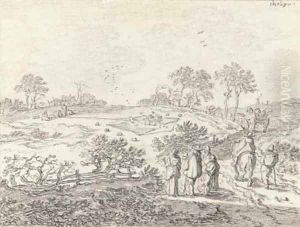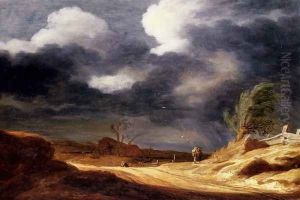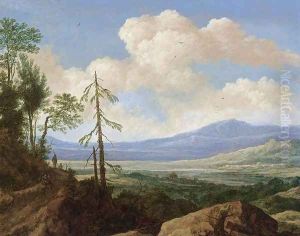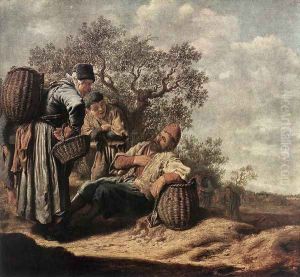Pieter de Molyn Paintings
Pieter de Molyn, also known as Pieter Molijn, was a Dutch Golden Age painter and engraver born in London in 1595. Despite his English birth, de Molyn is often associated with the Dutch city of Haarlem, where he spent the majority of his artistic career and where he became a significant figure in the Haarlem Guild of Saint Luke.
De Molyn was primarily known for his landscape paintings, which were characterized by their detailed depiction of natural scenery and often included dunes, a common feature of the Dutch landscape. His early works show the influence of the tonal phase of Dutch landscape painting, which emphasized atmospheric effects and a unified palette. As his style developed, de Molyn's landscapes evolved to include more figures and became more narrative in nature.
In addition to landscapes, de Molyn also produced genre scenes, which depicted everyday life as well as historical subjects. He was one of the pre-Rembrandtists who contributed to the development of the genre and history painting in the early 17th century. His works in this genre demonstrate his ability to create detailed and dynamic compositions.
Pieter de Molyn's influence extended to his pupils and followers, who continued to propagate his style and contributed to the evolution of Dutch landscape painting. He was a master at the Haarlem Guild of Saint Luke for several years and took on several apprentices who would go on to become accomplished artists in their own right.
De Molyn passed away in Haarlem in 1661. His legacy is preserved in the many paintings and engravings that continue to be appreciated for their quiet beauty and skillful execution. His works are held in numerous collections and museums around the world, attesting to his enduring impact on the art world.


















